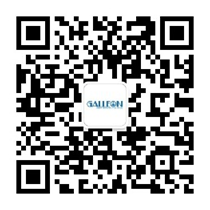A confluence of forces is merging to permit the civil aviation training enterprise to step up its pace to use XR (extended reality), primarily VR (virtual reality) and MR (mixed reality), as a learning enabler. Underpinning technologies for hardware and software are advancing to allow cadets and their operational counterparts to virtually and effectively complete higher fidelity and more diverse scenarios. Early returns on investment on XR-enabled instruction are encouraging ATOs and other training establishments to incrementally expand this technology across the wider learning continuum. Indeed, initial outcomes from use cases for pilots are motivating training organizations to expand XR for maintenance personnel, cabin crew and other community professionals’ learning activities.
Three randomly selected organizations provided insights for this article. While each entity has a unique, different community position there was a common thread in their perspectives: XR has emerged as a force in instructional design with the promise of an ever-wider use of the technology.
Representative Use Cases
Thor Paulli Andersen, co-founder, partner and developer at VRpilot, noted his company is seeing a constant, increasing demand for its solutions in procedure training, especially for new hires at airlines. “The primary uses here are SOP training (including CRM and callouts), flows training, cockpit familiarization and memory items training.” The executive observed VRpilot has also seen VR spilling over into other work functions on the aircraft. This includes maintenance, whose professionals also need to be able to perform procedures in the cockpit, but who are more limited on actual simulator time than pilots. “The norm has been that airlines initially adopt VR for pilot training and then expand it to cover maintenance and/or cabin crew after becoming familiar with the technology and its capabilities, and establishing the infrastructure to handle the hardware,” Andersen added.
To support its expanding customer list, VRpilot focuses on standalone VR headsets. “Our recommended headsets are the Pico 4 Ultra Enterprise and Meta Quest 3. We also support the HTC Vive standalone series, which offers other advantages.”
Andersen then reflected that standalone VR headsets have developed greatly over the past four years, and are now “great devices.” The executive first noted their high-performance results in low latency, thus reducing VR sickness. The devices’ lower weight and better weight distribution also enable longer training sessions before fatigue sets in. High resolution enables a realistic representation of modern flight decks. “The end result is, however, a combination of the way the software is designed, and the hardware,” he said and significantly emphasized, the software needs to make the most of the hardware’s capabilities and create realistic training experiences. “Our software also monitors the user’s time in VR and suggests taking a break if needed. We are looking forward to the next generation of standalone VR headsets which has been initiated by the standards set by the Apple Vision Pro. Increased resolution will enable the users to clearly read small text on the many screens found in today’s modern flight decks.”
Under this background, the Civil Aviation Flight and Operation Technology Forum 2025 will be held in November 20th -21th in Chengdu City, Sichuan Province.



